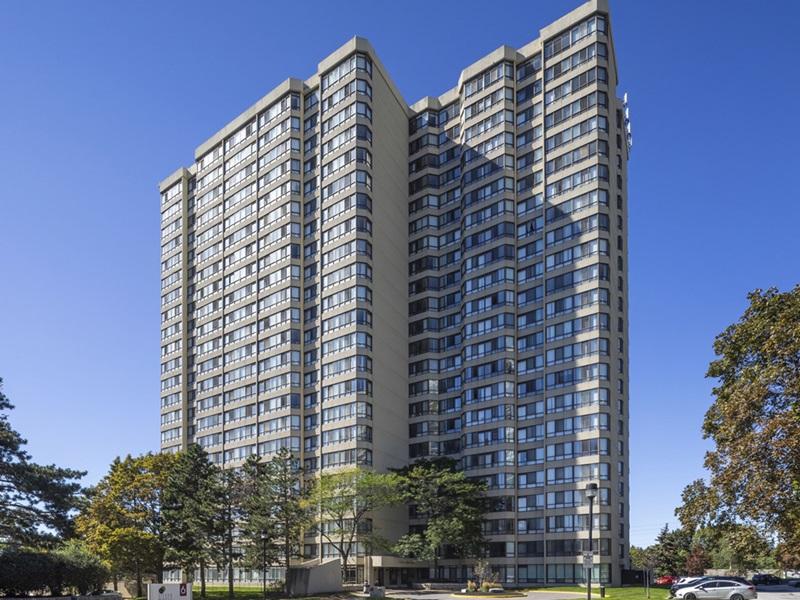
Samir Manji, founder and CEO of Sandpiper Group. (Courtesy Sandpiper)
Calling Dream Office REIT a “diamond in the rough,” Sandpiper Group CEO Samir Manji says his firm has increased its position in the trust to a 10 per cent interest with the purchase of almost $13 million in units.
During the past year, Sandpiper has invested about $150 million into Dream Office REIT (D-UN-T). It is now the trust’s second-largest investor, behind only CEO Michael Cooper and entities he controls, which hold about 30 per cent of the units.
“We jumped into the market quite aggressively (in early 2019) and started building a position that we’ve been building on ever since,” Manji told RENX in an interview. “We just don’t think Dream Office is anywhere near the value the underlying assets represent.”
When Sandpiper made its first investment in Dream, on behalf of its Sandpiper Opportunity Fund 5 Limited Partnership, Manji said the units were trading at about $24. The most recent purchase of 372,000 units was made at an average price of $34.94 per unit.
Vancouver-based Sandpiper now owns and controls 6,147,073 units.
Dream Office big player in Toronto
Manji said Dream’s heavy concentration in downtown Toronto sparked his firm’s interest. He said 24 of Dream’s assets are in and around the core of Canada’s largest city.
“We were watching what was happening in the private market world and we saw transactions in late 2018 early 2019 for single assets in downtown Toronto selling for north of $700 per square foot at that time,” he explained. “Values have gone up since then.
“We were watching where Dream Office was trading and started doing a fairly in-depth underwriting and analysis that by summer brought us to the conclusion that, even if you use a value of $750 per square foot, it’s worth $39 per unit. It was trading for $24.”
Manji said at $24, Dream was trading for an implied value of $560 per square foot. Due to rapid increases in asset sale prices during the past year, he said buying at $35 per unit ($675 per square foot) means Dream Office is still a bargain.
Manji expects those asset prices to continue to rise.
“We’ve now seen single-asset transactions in downtown Toronto with a deep pool of buyers at the table north of $800 a square foot. We think it’s going to $1,000 because there is just a scarcity of product available and a very, very strong level of buying interest across both private, family offices, institutional capital,” he said, explaining Sandpiper’s rationale.
“At $800 a square foot, the value of Dream office is $42 per unit, at $900 it is close $48. At $1,000 a square foot, which we think we will see in Toronto given the tailwinds and momentum that city is demonstrating, and that market is demonstrating, at $1000 a square foot Dream is worth $53 a unit.
“Any way you slice it they’ve got the tailwinds, they’ve got a very healthy asset base, you’re not starting from a base where you’re hoping to be able to accumulate a portfolio, it is in place today.
“Anyone who gets to buy these units becomes an owner of a beautiful portfolio of real estate, that is irreplaceable.”
Support Cooper, Dream’s strategy

Michael J. Cooper is the president and chief responsible officer of Dream, as well as chair and CEO of Dream Office REIT. (Courtesy Dream)
Sandpiper and Manji have a reputation as activist investors, who are quick to point out perceived shortcomings in how management is operating its portfolios. In this case, however, Manji said Sandpiper is very happy with CEO Cooper and Dream’s strategy.
“We’re certainly happy to sit on the sidelines, support behind the scenes, engage with Michael in a very collaborative manner, perhaps share some ideas,” he said.
“But really . . . no significant demands. We like what they are doing, we like the direction, we look forward to seeing the strategy and plan continue to be executed.”
Manji also said Dream made the right move in 2017 divesting its Alberta properties as oil and resources prices continued to languish. Those funds have since been recycled in more lucrative assets and markets.
“That was certainly the major historical sort of black mark, but credit to management. They ripped off the Band-Aid, made the hard decision to exit early and quickly and it has paid huge dividends.”
Manji said Dream has maintained the properties to a high standard. He expects any required investments in upgrades and improvements will be more than offset by increased rents and value-add to the properties.
The rapid increases in leasing rates throughout Toronto and the GTA should also improve the financial results of the portfolio.
“As Dream sees leases mature in their asset base, leases that generate rents in the low-$20 range, they are going to be able to renew those leases at $35 or higher,” Manji noted.
“The revenue and income may take a bit of time to catch up, but that doesn’t concern us because the underlying value is there in the real estate.”
The downtown Toronto market
Toronto’s downtown office vacancy rate hovers around one per cent, and although significant new space is in the development pipeline, most of it is already pre-leased. This means the market is likely to remain very tight, with rents continuing to escalate.
Manji is buoyant on the GTA market, particularly downtown. He sees several factors, including the rapidly expanding tech sector, continuing to contribute to demand for space.
“If you look at it from a currency equivalent, Toronto is still cheap when you look at that relative to a New York, L.A., Boston, Chicago or San Francisco.
“Probably the two key markets we would compare Toronto to would be New York and San Fran because of the whole tech space,” he said. “We are seeing a lot of tech companies open up shop in Toronto, expand into Toronto, some even starting in Toronto.
“I think one of the reasons why is because to operate a technology company out of Toronto today is not only cheaper than New York and San Francisco, it is also cheaper than Columbus, Ohio and St. Louis, Missouri. So, for a lot of companies it’s a no-brainer.”
Toronto’s deep and expanding tech talent pool is also a key factor.
“You are not compromising on talent.
“Both from an immigration standpoint – Toronto is attracting the brightest and best – and even from an in-grown market perspective you’ve got incredible institutions right in the back yard there with U of T and Ryerson, that are producing tomorrow’s tech leaders.”







